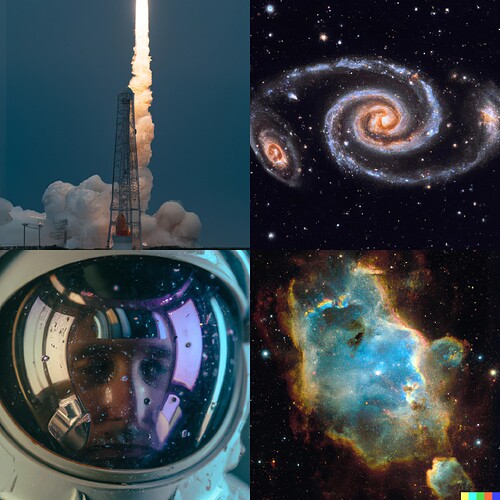image by me in dall e 2
AI image generatior, such as DALL-E, has many benefits. It allows for the rapid creation of high-quality images that are consistent with textual descriptions, even for complex or abstract concepts. This can be useful in a wide range of applications, from product design and marketing to art and entertainment. AI image generation can also help to automate repetitive tasks, freeing up human designers and artists to focus on more creative and high-level tasks. Additionally, it can allow for the creation of new and innovative designs that may not have been possible using traditional design methods. Overall, AI image generation has the potential to revolutionize the field of design and create new opportunities for innovation and creativity.
As AI image generation technology continues to advance, there is growing concern about the potential side effects of this technology. While AI-generated images can be highly creative and impressive, there are several potential risks and negative impacts associated with this technology.
One of the main concerns is the potential for AI-generated images to be used for malicious purposes, such as creating deepfakes or propaganda. Deepfakes are images or videos that have been manipulated using AI algorithms to make them appear realistic but false. They can be used to spread false information, create political propaganda, or damage someone’s reputation. The ability of AI to generate highly realistic images and videos makes it easier for malicious actors to create convincing deepfakes, which can be difficult to detect and debunk. Another concern is the potential impact of AI-generated images on the job market. As AI algorithms become more advanced, they may be able to replace human workers in industries such as graphic design, photography, and video production. This could lead to job losses and economic disruption, especially for workers who lack the skills or resources to transition to new industries.
AI-generated images may also have negative impacts on society’s perception of reality. As AI algorithms become more advanced, it may become increasingly difficult to distinguish between real and fake images, leading to a erosion of trust in visual media and potentially undermining the credibility of important information.
Finally, there are concerns about the potential impact of AI-generated images on mental health and well-being. AI-generated images can be highly addictive and may contribute to the spread of unrealistic beauty standards or other harmful cultural ideals. Additionally, the use of AI-generated images in advertising or other media may contribute to feelings of inadequacy or anxiety among viewers. In conclusion, while AI image generation technology has many potential benefits, there are also several potential side effects and risks associated with this technology. It is important for researchers, policymakers, and society as a whole to carefully consider the potential impacts of this technology and take steps to mitigate potential negative effects. By doing so, we can ensure that AI image generation technology is used for the greater good, rather than being used to spread false information or undermine society’s well-being.
